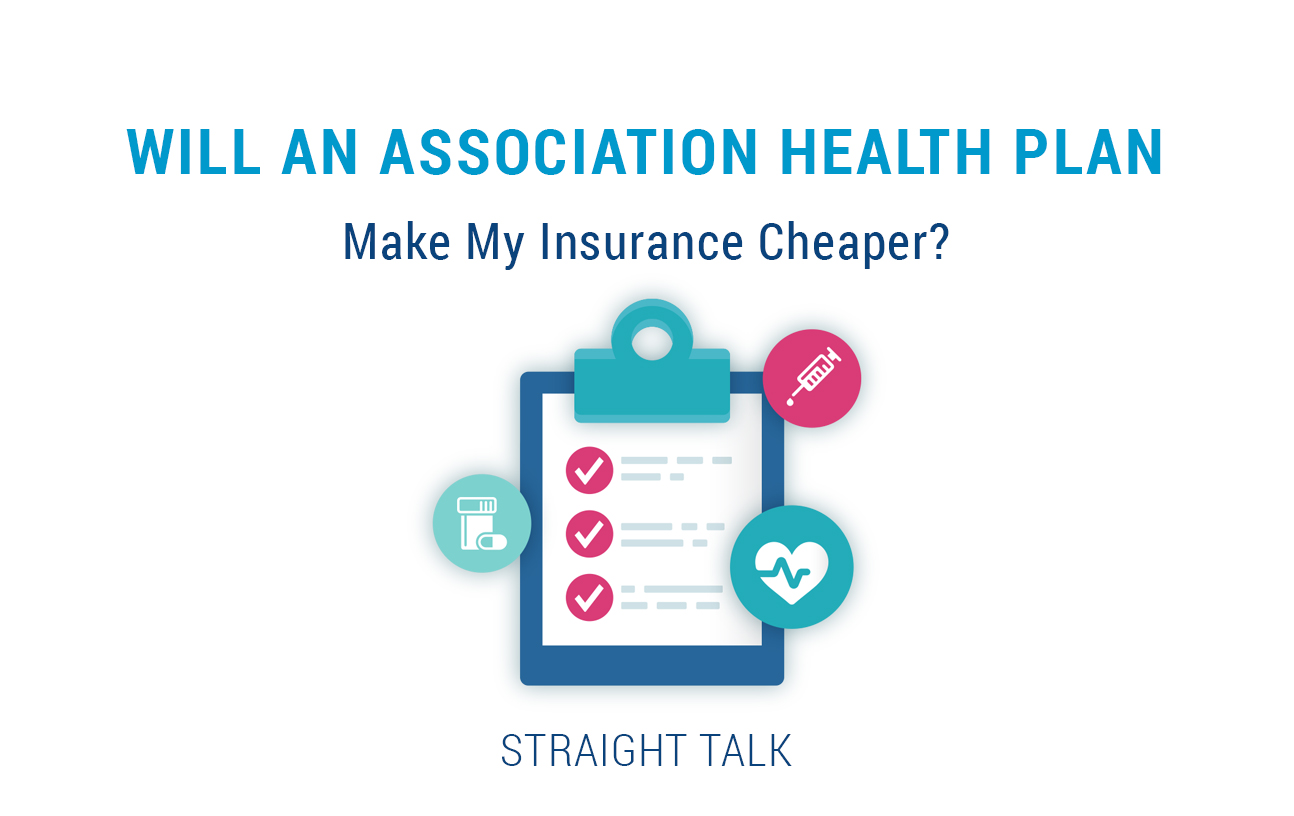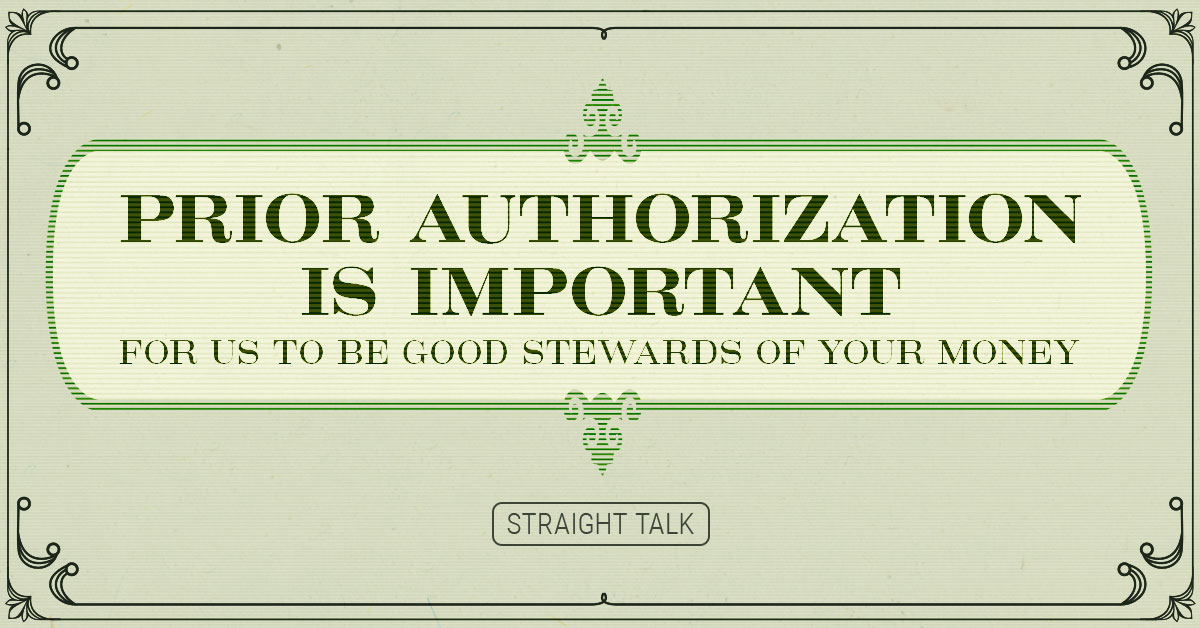Last fall, the President signed an executive order that REQUIRES three federal agencies to formalize some Affordable Care Act (ACA) escape routes. The agencies recently started to issue final rules on those orders, and I have some thoughts on these things now that they are more concrete. Let me Straighten this out a bit…
The ACA Changed Health Insurance
When a change like the healthcare reform law happens, and because human nature is what it is, I fully expect people who are disadvantaged by that change to really try to find an escape route from it. It’s only natural to want to defend your own finances, business or family from external things that you think will hurt them.
One thing the ACA did, among thousands of intended and unintended effects, was try really hard to federalize, and combine into a single risk pool, the individual health insurance market and the small group market (typically fewer than 50 employees).
As a part of that effort, the ACA tightly defined “health insurance” within these categories, giving it value, coverage and eligibility requirements. Every individual and small group plan that insurers sell has to meet all of these requirements.
If I were buying health insurance back in 2013 (before the ACA), 25 years old and healthy as a horse, insurance companies would be enticing me with very low rates, maybe $100 a month, to buy their excellent coverage. Such a deal!
But you can see the problem, can’t you?
Great For the Sick, Not Great for the Healthy
What happens to the non-“healthy as a horse” crowd? Without any legal protection, they either got charged more, were forced to buy worse coverage or were excluded completely from the insurance pool. They were considered a “bad risk,” sort of like a car insurance company might treat a driver with a ton of wrecks. And I think we’d all agree that getting your health fixed is more important than driving for a sick person.
So the net effect of all these new rules and regulations was to invite a whole bunch of sick people into insurance company risk pools. As a Blue Cross employee, I welcomed them with open arms. Many of the people we began insuring in 2014 had never had health insurance in their lives. They were desperately in need of healing, and there is little higher than that in my pantheon of “the right thing to do.”
Right or not, healing all those folks cost a fortune. All the people who were ALREADY covered (and healthy) now had to share the expense of healing all those sick folks. The already covered crew saw their health insurance rates double. The ACA eliminated family plans in the individual market, meaning people with two or three kids saw their rates MORE than double.
Some folks got this extra cost covered by federal Advanced Tax Credits. About half of them here in Louisiana did not.
So, how did they react to this new threat to their wealth, health, retirement, kid’s education, etc.? They sought escape routes.
In comes the President’s executive order and its ACA escape routes: Short-Term Limited-Duration Health Insurance (STLDI) for Individuals and Association Health Plans (AHP) for group coverage. We’ll talk more about STLDI when the final rule on them is issued.
The final rule on Association plans is out, and we can talk a lot about that. We need to consider some important questions:
What’s an Association Health Plan?
Association health plans are built on the notion of volume discounting and leverage. What if I could take 50 companies that each have 20 employees and combine them into a single, 1,000 employee entity when I go shopping for health insurance?
Surely I’d get a better deal than the 50 individual companies shopping on their own?
Even before the ACA, this seemed like a no-brainer. But the ACA made the situation worse by imposing very tightly regulated health plans on companies under 50, but not on companies over 50! This becomes an extra incentive for small companies to be treated like large ones when they go shopping for health insurance. The crux becomes, what is the nature of the “connection” between the 50 companies? It’s obviously not some sort of ownership.
What Does the Rule Say?
In the past, some fly-by-night outfits swooped into a few states, set up bogus “associations” and rooked hard-working, premium-paying folks out of millions of dollars. You can bet these robberies were on the minds of federal and state regulators when they started reconsidering association plans this year and how to regulate them. The final rule from the Feds is 198 pages long, and the state will have a say as well. Let’s take a look at some of the more important points of the rule:
1. Can an association be formed just to offer health insurance?
Based on the final rule, no! An association has to have a legitimate reason to exist other than just to offer a health plan to its members. The test the Feds proposed is: “Would the association have formed without offering a health plan?” This means existing associations will have an advantage in trying to create a health plan over brand new associations. In fact, Louisiana has a law on its books that requires an association to exist for five years BEFORE it offers health insurance, but it is unclear if that is enforceable under the new rule.
2. What does an association look like?
The federal rule has a lot of structural requirements that an association has to meet. It has to have a board, founding documents and bylaws, people who are financially responsible for the association (fiduciaries), and it must have a structure that puts control into the hands of the businesses in the association, not some unrelated third party. This could be a ton of administrative complexity that will have to be resolved BEFORE the AHP offers a health plan. Again, you can see a bias toward established, existing associations that want to add a health plan.
3. Can an AHP save money by cutting back on what it covers?
Depends. Small groups are required to cover what the Feds call the 10 categories of Essential Health Benefits (EHBs). Large groups can exclude a category if they cover NOTHING within that category. This is harder than it seems. Often state law requires something that touches a category to be covered, triggering coverage of the whole category. For example, federal law specifies that if a group plan covers 15 or more employees, it must offer maternity coverage, meaning every association WILL have to offer maternity coverage.
In addition, AHPs must cover:
- USPSTF Schedule A/B tests/immunizations/screenings at $0 copay
- Max out-of-pocket $ limits like a Qualified Health Plan
- NO lifetime or annual limits allowed on EHB category coverage
- NO pre-existing conditions may be excluded
- Kids to age 26
- No waiting periods longer than 90 days
- Must allow OB/GYN, pediatrician, geriatrician as primary care
So you can see it will be tough for an AHP to save money by cutting coverage.
So Mike, Can the Association Save Me Money or Not?
The point is small groups are forced to buy federalized coverage that is narrowly defined and gives them far fewer options. Here at Blue Cross, we have fewer than 40 plans that meet the federal criteria to sell to groups under 50, but more than 400 plans for groups with more than 50 employees, because those large plans are free from most of the federal rules!
So small companies – even sole proprietors – want access to the 400 plans; they don’t want to just be limited to the 40. As an association, they would have a ton more flexibility in plan design and probably get better deals on their rates, at least a little.
That is, if they can manage all the administrative expenses, structural requirements and cost hurdles. Oh, and did I mention an association needs a $1 million liquid reserve fund in Louisiana to start up? Yep, there’s that, too.
Straight Talk is that there is potential here. But you can see it’s a big lift. More to follow!





How many businesses are required to form an association?
This is an excellent question and the answer is “There is no answer”. None of the regulations at the state or federal level that I have found specify a fixed number or minimum number of businesses. But the Association itself has to have a reason for existence BEYOND offering health insurance. Such a bona fide one that the association would have come into being even if it never offered coverage. Plus all the other structural and legislative hurdles mentioned in the article. thanks!…mrb
Mike:
I have an association that is interest in this. They have about 80 members statewide with about 10,000 employees.
I would like to talk on some questions I have before I talk to them again.
Thanks
Linda Lormand
337-794-6276
I’m happy to give you a call. Or you can reach out to me if I miss you at 225-297-2719. Thanks for reaching out!…mrb
There’s definately a great deal to learn about
this subject. I really like all of the points you made.